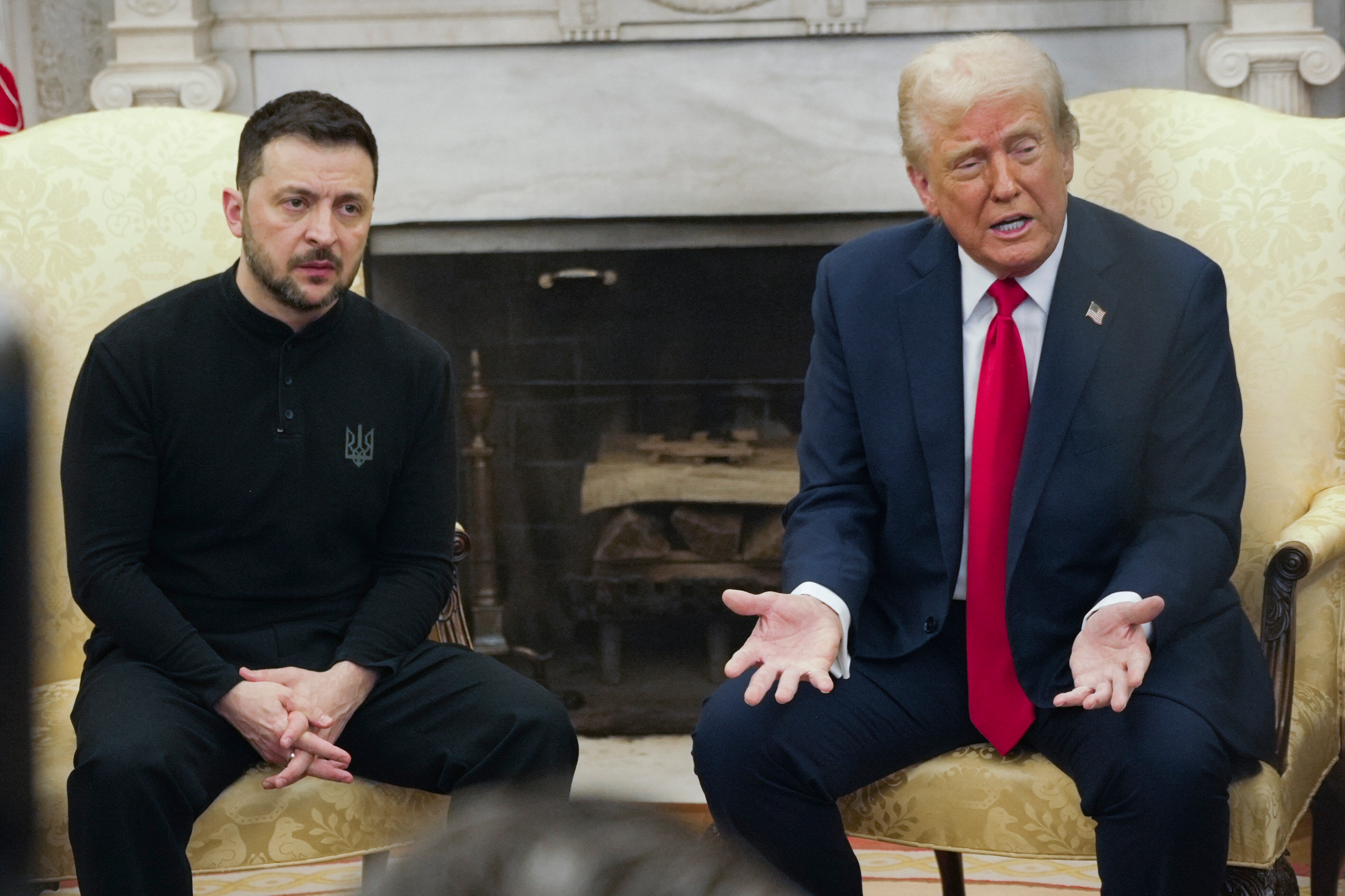
Ukrainian President Volodymyr Zelenskyy is speaking about his historic Oval Office clash with US President Donald Trump, defending his decision to speak up for his country at a critical juncture in its war against Russia.
The two leaders sparred inside the White House in front of the whole world last month with Trump accusing his Ukrainian counterpart of “gambling with World War III” for arguing that Russian President Vladimir Putin can’t be trusted. The episode led to a temporary pause in US aid and intelligence sharing with the country.
Advertisement
In an interview with Time released on Monday, Zelenskyy addressed the fact that Ukrainians rallied around him after his tense exchange with Trump rather than blame him for the diplomatic failure three years into the war.
Zelenskyy explained that Ukrainians “are very emotional, and when it comes to our sense of dignity, freedom, democracy, our people rise up and unite,” noting that his country expected the Trump administration to show that the U.S. still sees Kyiv as an ally.
“But in that moment there was the sense of not being allies, or not taking the position of an ally,” he said. “In that conversation, I was defending the dignity of Ukraine.”
Advertisement
At the infamous White House meeting, the Ukrainian leader said he planned to gift Trump the championship belt of heavyweight world champion Oleksandr Usyk. However, Zelenskyy chose to start out by showing Trump images depicting how badly Russia has treated Ukrainian prisoners of war.
“That’s tough stuff,” Trump said looking at the photos.
In his interview with Time, Zelenskyy defended his choice to give Trump the images, adding that he was hoping to appeal to the president’s humanity.
“What I wanted to show were my values,” Zelenskyy said. “But then, well, the conversation went in another direction.”
Advertisement
After the meeting went off the rails, Zelenskyy left the White House early and never got the chance to give Trump the belt. However, Time reported that a White House staffer found the gift in the Oval Office and placed it in Trump’s dining room.
Since then, Russia and Ukraine have agreed in principle to a limited ceasefire after Putin rejected a US proposal for an unconditional ceasefire which was approved by Kyiv. A US delegation on Monday met with Russian officials in Saudi Arabia a day after holding a separate meeting with their Ukrainian counterparts to discuss the implementation of that agreement.
Meanwhile, White House envoy Steve Witkoff told Tucker Carlson Putin “has got huge respect” for Trump, suggesting that Zelenskyy made a mistake by crossing Trump when he visited the White House.
Advertisement
“You saw what happened in the Oval Office with Zelenskyy and the president, right?” Witkoff said in an interview released on Friday. “Disrespecting him is not a healthy way to have a good relationship.”
“Hopefully we’ll chalk it up to a misunderstanding and we’ll get to a peace solution here,” he continued.
Zelenskyy also spoke out against granting Moscow major concessions with no reciprocation, citing Trump’s previous statement that Russia should rejoin the Group of 7 following its annexation of Crimea in 2014.
Advertisement
“That’s a big compromise,” Zelensky told Time. “Imagine releasing Hitler from his political isolation.”













































